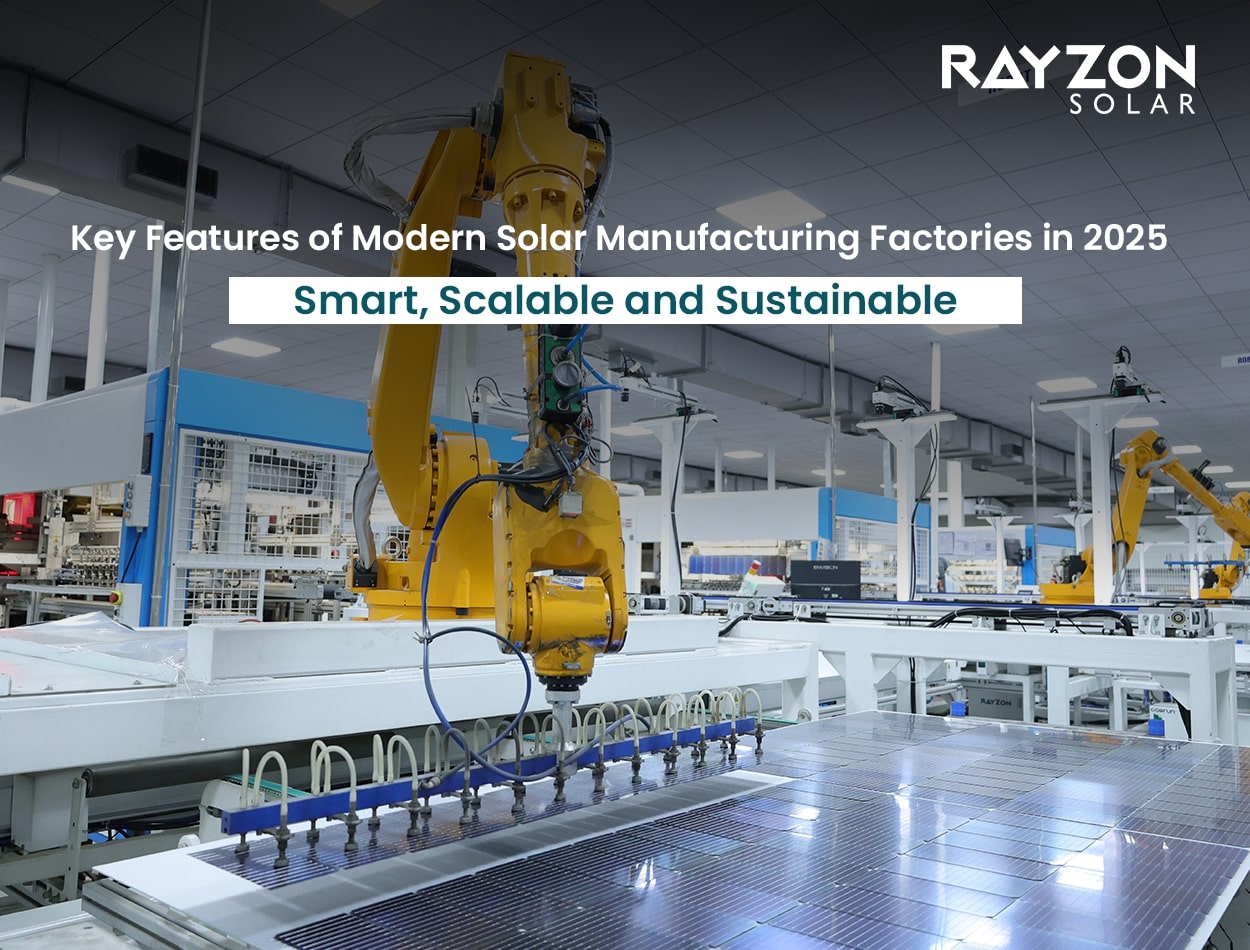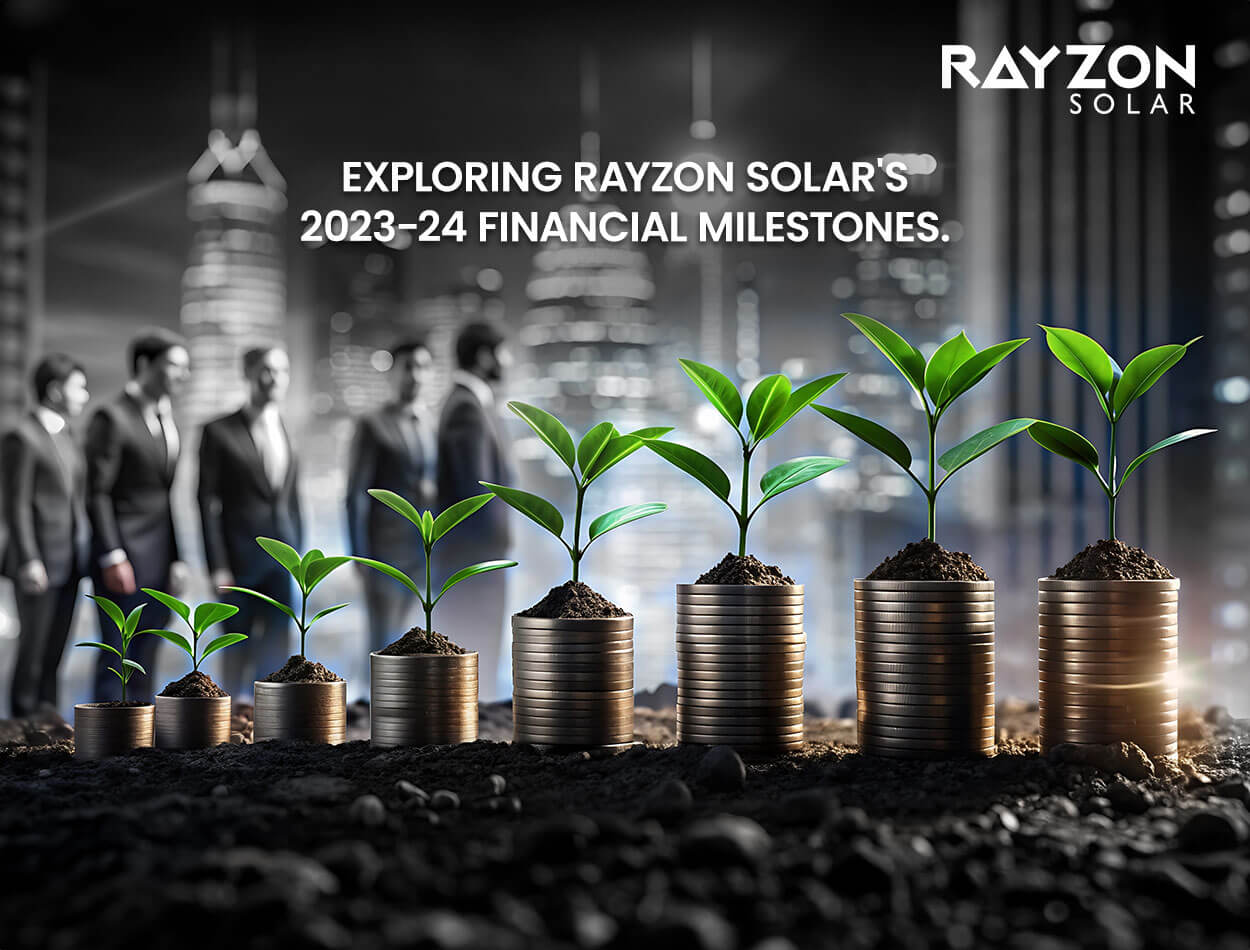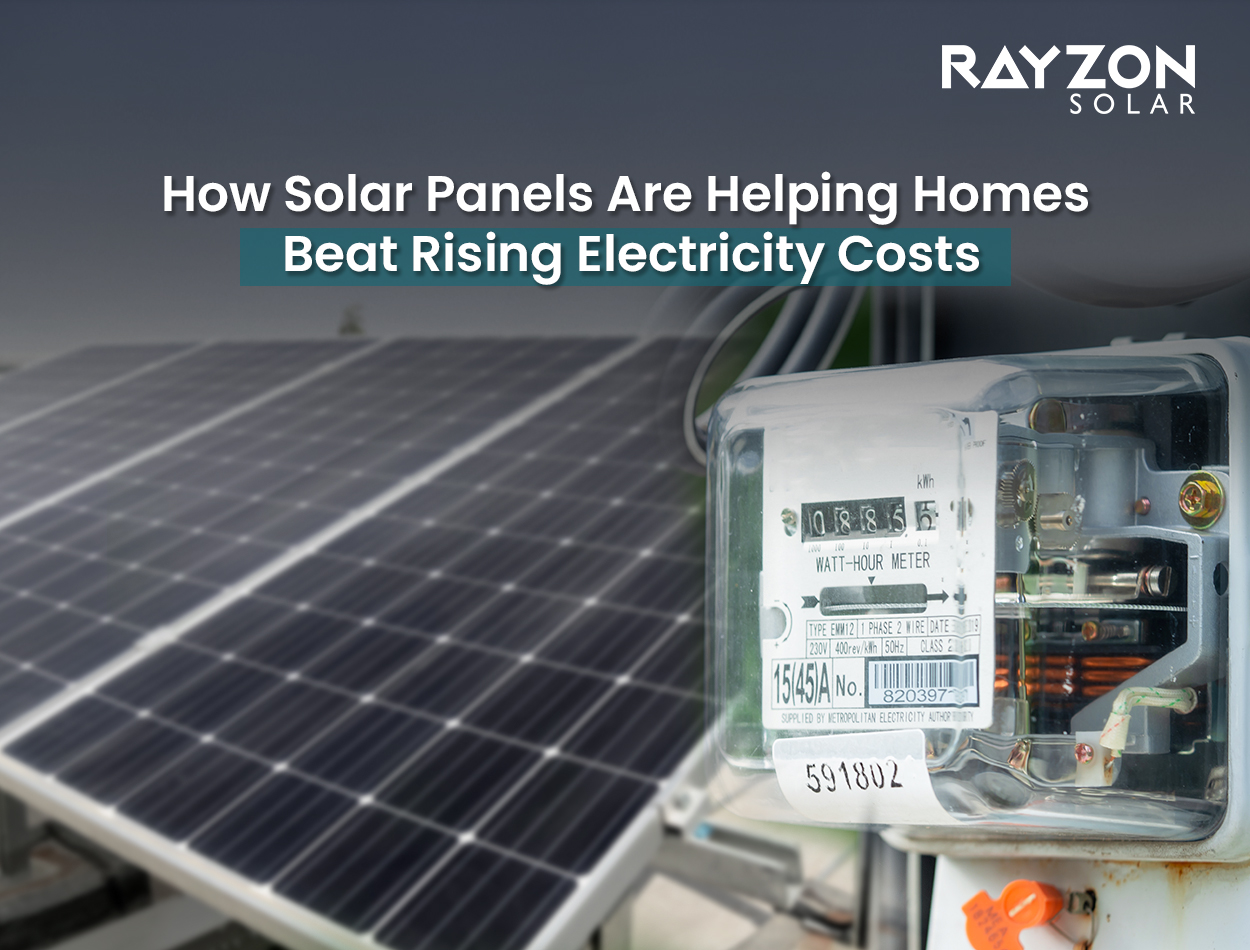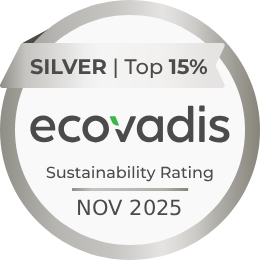
Key Features of Modern Solar Manufacturing Factories in 2025: Smart, Scalable, and Sustainable
In 2025, the global solar energy market is witnessing a monumental shift, not just in technology adoption but in how solar panels are actually manufactured. From India to the USA, modern solar manufacturing factories are evolving into intelligent, eco-conscious, and highly automated hubs. These next-gen facilities combine AI, IoT, automation, and high-efficiency solar cell technologies to meet the world's growing renewable energy demands.
The transformation is particularly visible in India, where solar production capacity expansion is rapidly turning the nation into a global solar manufacturing powerhouse. With sustainability and scalability at the core, these factories are not only focused on quantity but on quality, resilience, and innovation. This blog takes a deep dive into the key features that define the modern solar manufacturing factories in 2025.
1. Solar Manufacturing Automation and AI Integration
Automation is the beating heart of modern solar manufacturing. Robots handle everything from wafer cutting and cell printing to module lamination. AI in solar panel production ensures quality checks are fast, accurate, and consistent. This significantly reduces human error and increases throughput.
Advanced machine learning algorithms are used to detect microscopic defects in solar cells, enhancing output and reliability. With smart factories using IoT, real-time data from sensors optimizes energy usage, equipment performance, and predictive maintenance.
Relevant Blog: Automation in Solar Panel Production
2. High-Efficiency Technologies Lead the Charge
Modern solar plants now prioritize the production of TOPCon and perovskite module manufacturing. These advanced modules have higher energy yields and lower degradation rates. Technologies such as:
- TOPCon (Tunnel Oxide Passivated Contact)
- PERC (Passivated Emitter and Rear Cell)
- Perovskite-Silicon Tandem Cells
- Bifacial Solar Panels
...are becoming standard in new factories.
Rayzon’s TOPCon Solar Panel Technology and Perovskite solar blogs showcase how India is leading in solar efficiency upgrades.
3. Sustainable Solar Manufacturing
The rise in sustainable solar manufacturing practices is reshaping factory designs. From using recycled materials to rainwater harvesting and solar-powered assembly lines, factories now aim for net-zero carbon operations. Rayzon Solar exemplifies this commitment in their sustainability blog.
Factories are also minimizing waste through precise material usage and reusing defective materials via closed-loop systems. This not only reduces their environmental footprint but also enhances long-term profitability.
4. Backward Integration Strengthens the Supply Chain
Backward integration in the solar industry allows manufacturers to control more stages of production — from silicon ingots to final modules. Companies like Rayzon Solar are investing in backward integration to boost supply chain resilience and reduce dependency on imports.
Relevant Blog: The Manufacturing Process of Solar Panels
5. Capacity Expansion and Export Orientation
India’s solar production capacity expansion is projected to surpass 25 GW by the end of 2025. Major players like Rayzon Solar, Adani Solar, and Vikram Solar are not just catering to domestic needs but are also exporting high-efficiency panels globally.
Visit: Top Solar Panel Manufacturers in India 2025
This expansion also includes localized manufacturing units, advanced R&D labs, and vertically integrated campuses.
6. Smart Factories with IoT Integration
Smart factories using IoT enable seamless connectivity across machines, inventory, quality control, and workforce management. Features include:
- Real-time performance monitoring
- Digital twins of production lines
- Predictive alerts and diagnostics
This digitalization makes solar manufacturing leaner, faster, and more efficient.
Related: Monitoring Solar Energy Systems
7. Vertical Integration with R&D and Innovation Hubs
Modern solar factories are increasingly integrating research and development centers within their production campuses. This vertical integration empowers manufacturers to innovate faster, test prototypes in real-time, and swiftly implement new materials or solar technologies into the manufacturing process. It helps shorten development cycles and keeps manufacturers competitive in an industry where breakthroughs like TOPCon and perovskite cells are happening rapidly.
Such R&D-focused setups also facilitate real-world testing environments for bifacial, high-efficiency, or hybrid modules, providing instant feedback that improves module durability and performance.
Key Benefits:
- Faster prototyping and testing
- Real-time innovation and implementation
- Improved module reliability and yield
To stay ahead, modern solar factories are co-locating with R&D centers. This fosters innovation in real-time, enabling companies to quickly prototype and implement new materials, designs, and efficiencies into the production line.
8. Green Certifications and ESG Compliance
In 2025, ESG (Environmental, Social, and Governance) goals play a central role in how solar factories operate. Modern solar manufacturing factories are now designed to meet rigorous environmental standards, earning certifications such as ISO 14001 for environmental management and LEED certification for green buildings. These standards signal a factory’s commitment to sustainability, resource efficiency, and ethical governance.
Apart from environmental impact, ESG also focuses on labor practices, stakeholder transparency, and supply chain responsibility. Solar companies that align with ESG values are more attractive to investors and international buyers alike.
Key Features:
- ISO and LEED certifications
- Ethical labor and sourcing standards
- Transparent ESG reporting
Modern solar factories are not only environmentally conscious but also driven by ESG (Environmental, Social, and Governance) metrics. Green certifications such as ISO 14001 and LEED compliance are standard goals.
9. Advanced Material Handling and Cleanroom Practices
Solar modules in 2025 involve ultra-thin wafers, advanced coatings, and delicate cells — requiring extremely controlled environments. Modern factories have adopted ISO-certified cleanroom environments with automated robotic handling to prevent contamination. Cleanroom technology ensures every stage from cell printing to lamination maintains consistent quality.
Automated material transport systems are now commonplace, helping avoid micro-cracks, dust, or human errors in sensitive operations. This minimizes wastage and ensures higher module efficiency and longevity.
Benefits Include:
- Reduced contamination and defect rate
- Higher product consistency and reliability
- Lower production losses
With thinner wafers and precision engineering, material handling within the factories has reached ultra-clean standards. Cleanroom environments and automated transport systems ensure consistency and reduce contamination.
10. Workforce Training and Automation Balance
While automation is integral to modern solar factories, a skilled human workforce remains indispensable. In 2025, successful factories invest in continuous upskilling programs focused on AI tools, robotics management, and real-time monitoring systems. Employees are trained to work alongside machines, not replaced by them.
The result is a hybrid model where automation boosts efficiency while skilled professionals handle complex decision-making and quality assurance.
Training Focus Areas:
- Robotics maintenance and oversight
- Quality control and calibration
- AI-based diagnostics and system analytics
Though automation is rising, skilled workforce remains vital. Manufacturers now balance automation with ongoing upskilling programs to train staff on AI tools, robotics management, and quality control protocols.
11. Renewable Energy-Powered Factories
In a self-sustaining loop, modern solar factories are increasingly powered by the very technology they produce. Many facilities in 2025 now operate entirely on renewable energy sources, particularly on-site solar installations. This drastically lowers the carbon footprint of production processes and helps achieve net-zero manufacturing.
Battery storage systems, solar microgrids, and energy monitoring platforms are used to ensure uninterrupted, eco-friendly energy supply across 24/7 operations.
Advantages:
- Reduced operational emissions
- Lower energy costs over time
- Enhanced brand reputation for sustainability
Many leading solar factories now operate on 100% renewable energy — often solar itself — to reduce their operational carbon footprint. These factories align perfectly with the green goals of the products they manufacture.
12. Real-Time Quality Assurance and Digital Twins
Digital twin technology is a major innovation in solar manufacturing for 2025. It creates a virtual replica of a solar panel or production line to simulate stress tests, energy output, and defect scenarios before actual deployment. Combined with real-time QA systems powered by AI and machine vision, it enables unmatched precision.
This predictive capability enhances module reliability, reduces returns, and increases customer trust in high-efficiency solar panels.
Highlights:
- Predictive modeling before physical testing
- AI-driven quality detection
- Reduced waste and defect rate
Digital twins of solar modules allow manufacturers to simulate performance outcomes during the design and production phases. This, combined with real-time QA using AI, ensures unmatched module reliability.
13. Data-Driven Manufacturing Decisions
Solar factories today operate like data centers — every process, from wafer cutting to module testing, is tracked through IoT and analytics platforms. These datasets are analyzed to improve production throughput, minimize downtime, and lower resource waste.
In 2025, data is not just collected but strategically used for optimization, cost forecasting, and supply chain decisions, giving factories a major edge.
Key Metrics Tracked:
- Energy usage and machine performance
- Yield per batch and efficiency losses
- Maintenance schedules and inventory flow
Data from sensors, energy meters, and software systems is being used for advanced analytics. These insights help improve throughput, reduce waste, and drive cost efficiencies across the entire solar module lifecycle.
Conclusion:
In 2025, the phrase "solar factory" means more than a production site — it embodies a technologically advanced, sustainable, and highly efficient environment. Modern solar manufacturing factories are leading the charge in climate resilience, high-efficiency output, and digital transformation.
These smart factories are critical in making solar energy not only affordable but accessible to the world. As countries race toward net-zero goals, the innovations within these production units will continue to shape the renewable energy landscape.
Call to Action:
Want to learn how Rayzon Solar's world-class manufacturing facility is shaping the future of clean energy? Explore our advanced modern solar manufacturing factory setup and discover our smart, scalable, and sustainable technologies. Visit our Rayzon Solar Blog to dive into more solar innovations and insights!
FAQs: Modern Solar Manufacturing Factories
Q1. What are the key technologies used in modern solar manufacturing factories?
TOPCon, PERC, perovskite tandem cells, bifacial modules, and AI-powered quality control systems.
Q2. How does AI improve solar panel manufacturing?
AI ensures defect detection, optimal material usage, predictive maintenance, and performance optimization.
Q3. What is backward integration in solar manufacturing?
It means producing raw materials like wafers, cells, and encapsulants in-house for better quality and cost efficiency.
Q4. How do smart factories benefit the solar industry?
IoT, real-time analytics, and automation improve productivity, reduce downtime, and increase output.
Q5. Why is India a key player in solar manufacturing in 2025?
India has invested in large-scale solar capacity, tech innovation, government incentives, and export-focused manufacturing.
Latest Trends & Rayzon’s Role:
At Rayzon Solar, we're proud to be at the forefront of this industrial evolution. Our commitment to TOPCon solar panels, backward integration, and AI-enhanced production ensures unmatched quality and performance. As seen in our Clientech 5GW Manufacturing Deal, we are doubling down on innovation to power a sustainable future.
Explore our latest achievements:
Together, let’s power the future with modern, smart, and sustainable solar manufacturing.



